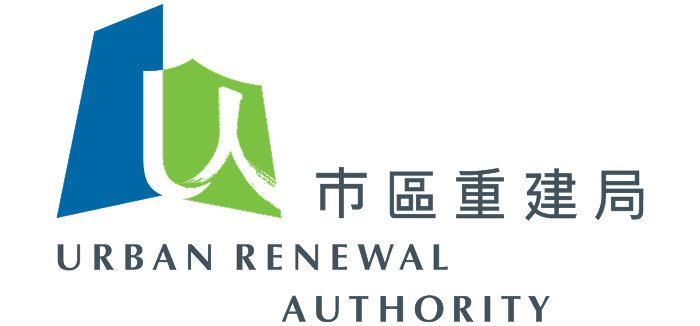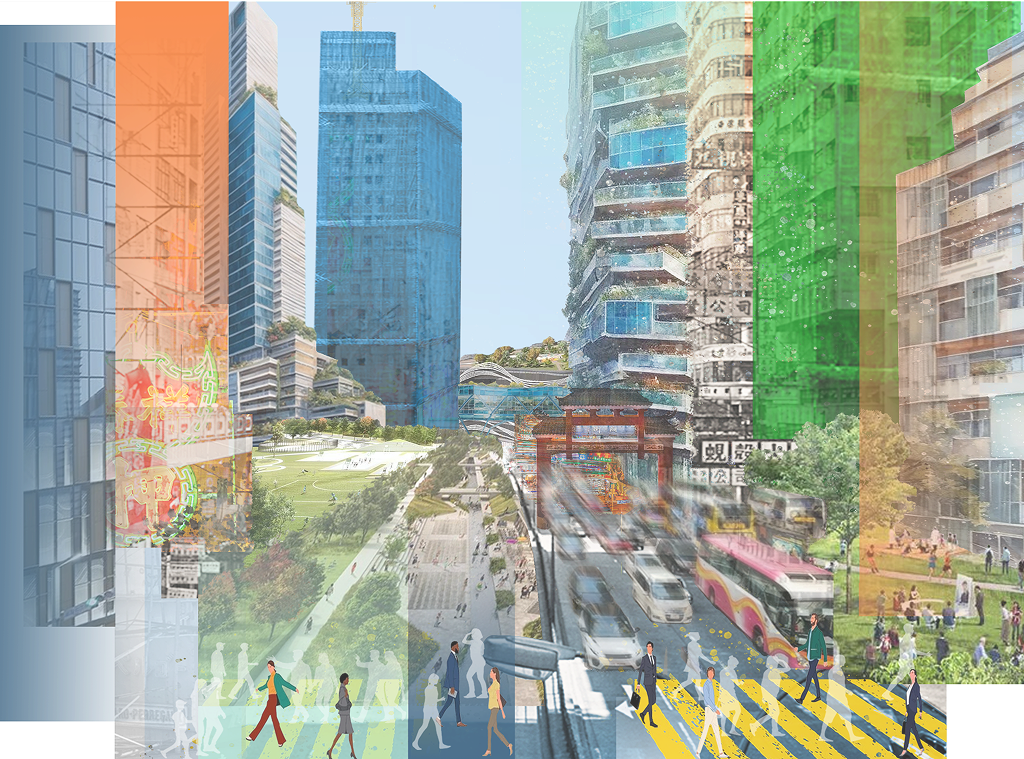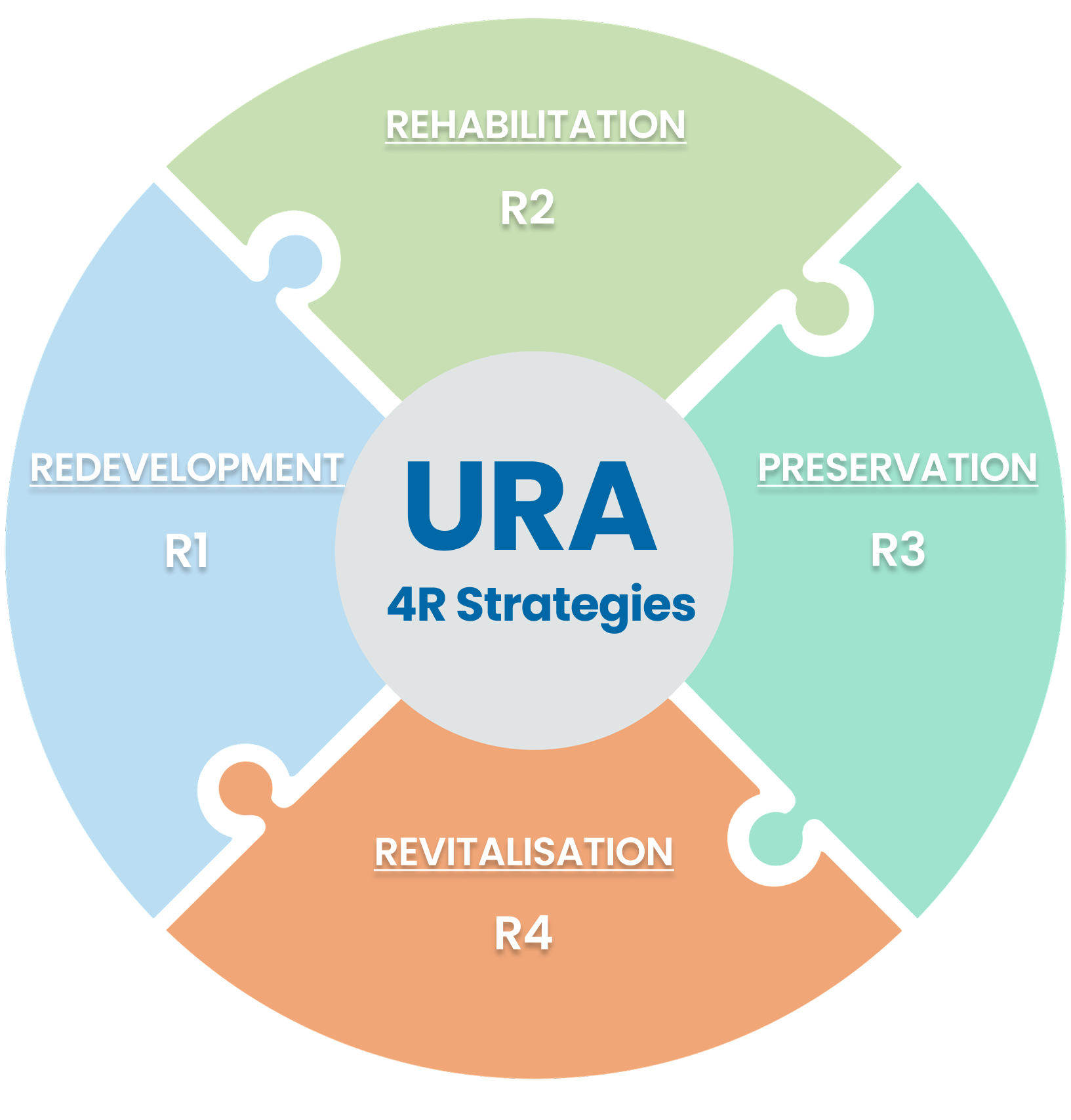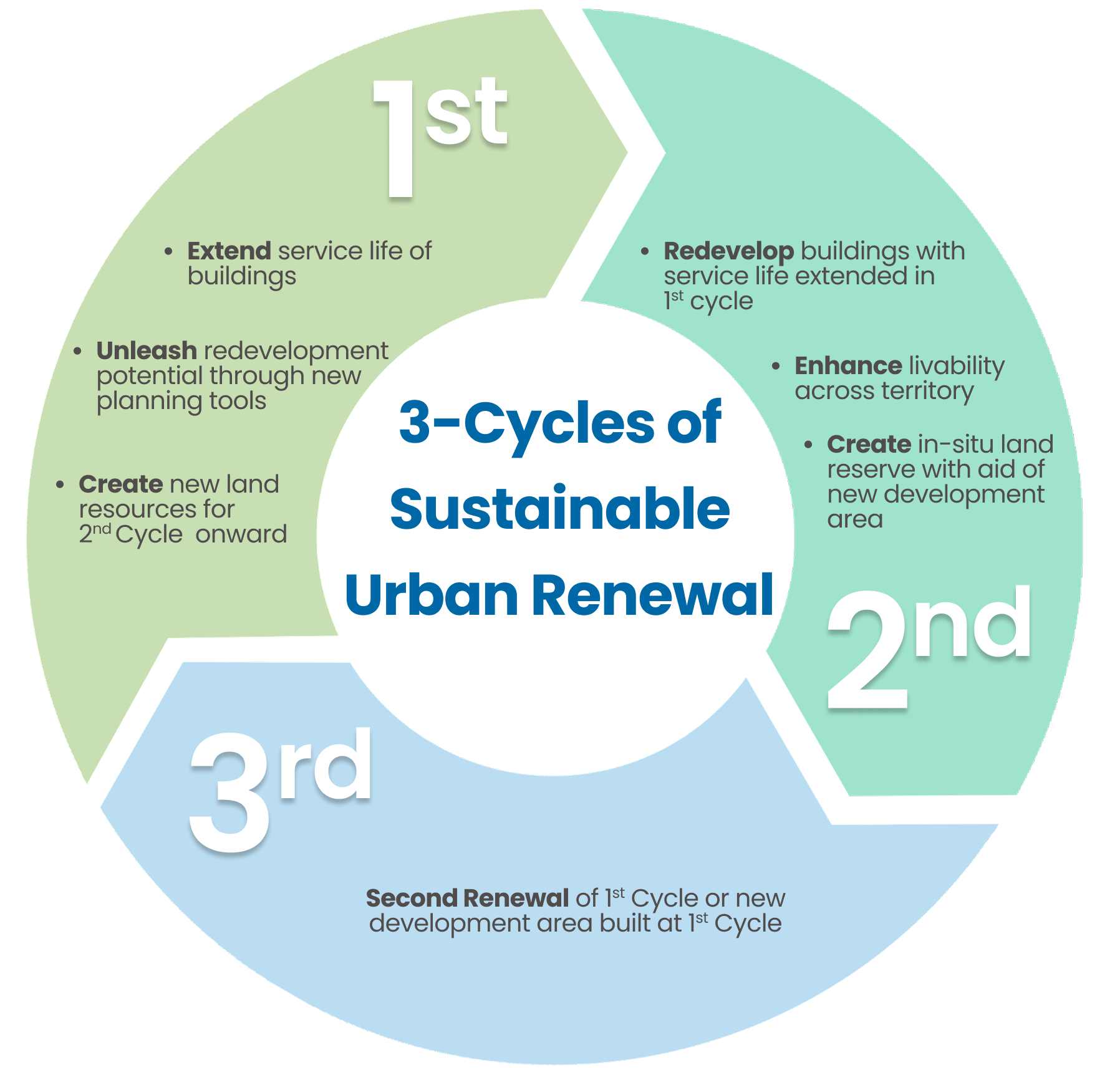


Urban Renewal
Design Ideas Competition
The District Study for Yau Ma Tei and Mong Kok
油麻地及旺角地區研究
城市更新
創意設計比賽
Urban Renewal Authority

The Urban Renewal Authority (URA) was established in May 2001 under the Urban Renewal Authority Ordinance as the statutory body to undertake, encourage, promote and facilitate urban renewal of Hong Kong, with a view to addressing the problem of urban decay and improving the living conditions of residents in old districts.
The URA follows the guidelines set out in the Government's Urban Renewal Strategy in the implementation of its urban renewal initiatives under a "people first, district-based, public participatory" approach.
4R Strategies
The URA adopts a comprehensive and holistic approach by ways of its two core businesses i.e. redevelopment and rehabilitation, as well as preservation, revitalisation and retrofitting, for creating a sustainable and quality living environment for the people of Hong Kong.

R1 : Redevelopment
Through comprehensive planning, redevelopment improves the built environment and infrastructure in old urban districts while providing more greening, public open space and community facilities. Dilapidated buildings are redeveloped into new buildings of modern standard, environmentally-friendly and smart design.
R2 : Rehabilitation
Building rehabilitation helps slow down the pace of urban decay by prolonging the lifespan of buildings, decelerating their aging process and improving the living conditions in-situ. Since 2004, the URA has provided financial subsidies and technical assistance to building owners for promoting and facilitating proper repair and maintenance of buildings.
The URA also encourages building owners, who are responsible for the proper management and maintenance of their buildings, to carry out Preventive Maintenance for their buildings in order to maintain the buildings and facilities in good condition.
To further enhance the living quality, the URA will explore how to assist owners to upgrade the buildings through "retrofitting" of facilities which meet the modern standard.
R3 & R4 : Preservation & Revitalisation
The URA preserves buildings, sites and structures of historical, cultural or architectural value if such preservation forms part of its urban renewal projects. It also undertakes heritage preservation projects which are outside its redevelopment project areas if there is policy support or a request from the Government. Some 60 historical buildings have been preserved by the URA.
During the urban renewal process, the URA incorporates the ‘place-making’ concept and makes use of the local characters, history, and culture of a district to form the ‘Node-Line-Plane’ with a view to strengthening the connection with the neighbourhood and human landscape to create a distinctive community environment. Place-making concept in Central and Sheung Wan is a good example, where the district’s historical and cultural characters are fully reflected while enhancing the vitality of the area. The URA also implements street beautification works to enhance the district's environment.
3-Cycles of Sustainable Urban Renewal
Three-Cycles of Sustainable Urban Renewal
According to the “Hong Kong 2030+: Towards a Planning Vision and Strategy Transcending 2030” (“Hong Kong 2030+”) report, Hong Kong’s urban areas face a dramatic surge in aging private housing, with the number of private residential units over 50 years old projected to increase more than fourfold within in the next three decades. Such exponential growth presents the urgent need for a holistic, district-based urban renewal approach strategy to address the multi-dimensional challenges of urban decay.
Challenges in Urban Renewal
Urban renewal in old districts encounters diminishing redevelopment potential, rising development costs and unpredictable financial and property markets that severely constrain its pace. These constraints have discouraged private sector participation, resulting in renewal / redevelopment initiatives that consistently lag behind the accelerating pace of urban decay. The Three-Cycle Urban Renewal framework adopts the three sets of Master Urban Renewal Concept Plans (MRCPs) developed in “YMDS”, representing the “+”, “0” and “-” density scenarios. Each scenario is developed with distinct assumptions regarding population, development intensity and resource allocation. These varying approaches aim to address, to different degrees, the public’s aspiration for a livable and high quality urban environment.
First Renewal Cycle:
The current implementation phase begins with the “+” scenario. This cycle focuses on encouraging property owners to conduct timely maintenance, thereby reducing future redevelopment demands. Key priority actions in this initial cycle include:
- Extend the service life of both new and existing buildings by encouraging building owners to carry out building maintenance and management, to relieve redevelopment pressure.
- Unleash development potential through innovative new planning tools, to release land and create development capacity for modern community facilities, quality recreational spaces and housing for relocation purpose.
- Manage finances and initiate the development of new land resources to ensure support for future renewal cycles.
Second Renewal Cycle:
With new development areas by the government providing additional land supply, buildings whose service life extended in the first cycle can now be redeveloped. The concept of Transfer of Plot Ratio “TPR” could be explored to create in-situ land reserve for renewal through the transfer of density from urban areas to the new development areas. Once the “+” scenario matures and sufficient financial/ land resources are secured, the “0” scenario can be implemented. This enables lower density urban renewal to support the “HK2030+” vision of enhancing livability in compact high-density cities.
Third Renewal Cycle:
Buildings renewed under the initial “+” scenario will require “secondary renewal” upon reaching 70 to 80 years of age. When supported by sufficient economic capacity and available land resources, the “-” scenario can be implemented during this subsequent renewal phase. This approach reduces urban building bulk and population density, ultimately achieving the “HK2030+“ vision of sustainable urban development.

URA launched a TV Series in 2023 titled “Urban Renewal: Challenges and Opportunities”. Taking Yau Mong District as an illustration, Episode 11 introduces the Three Phases of Urban Renewal.
URA TV Series: Episode 11: Three Phases of Urban Renewal (Video, in Cantonese)